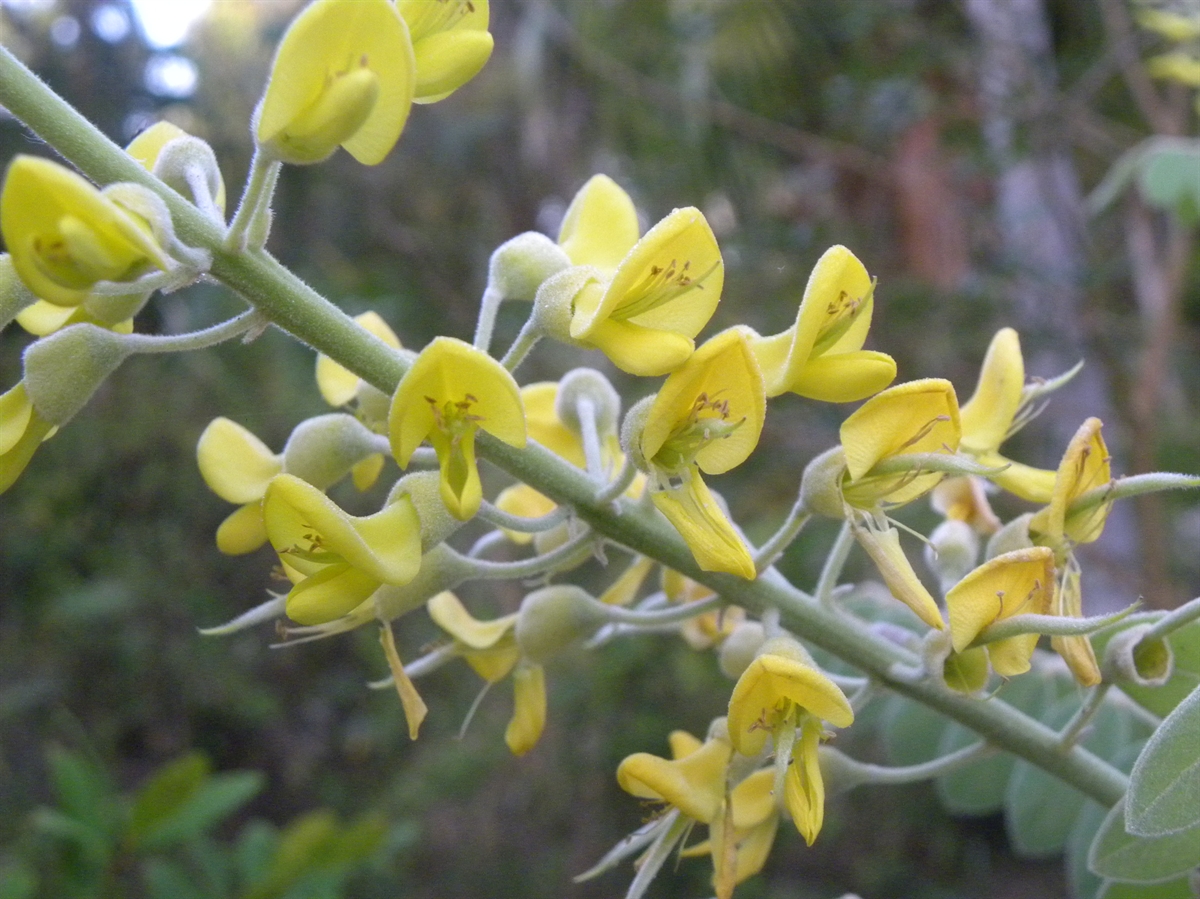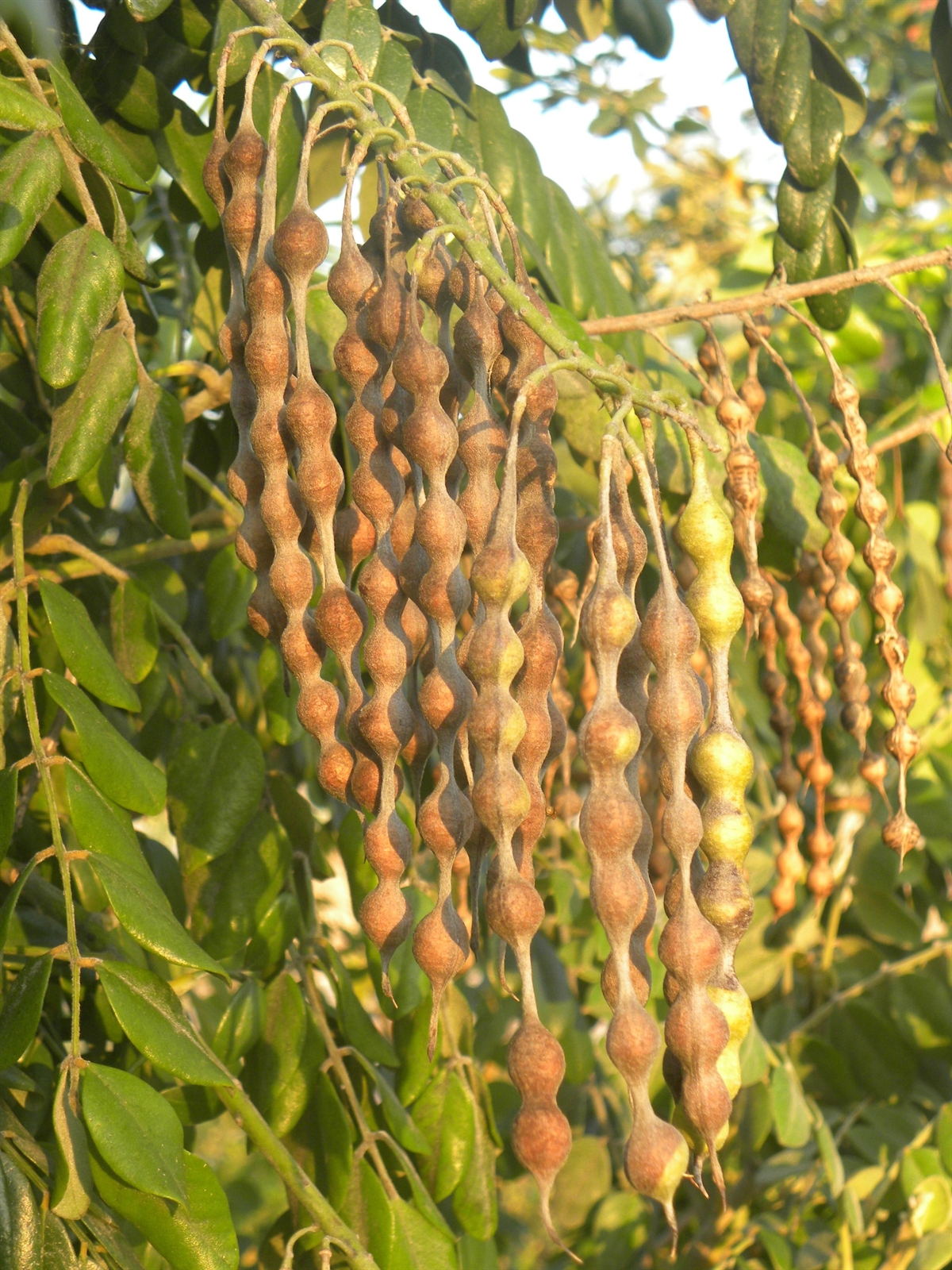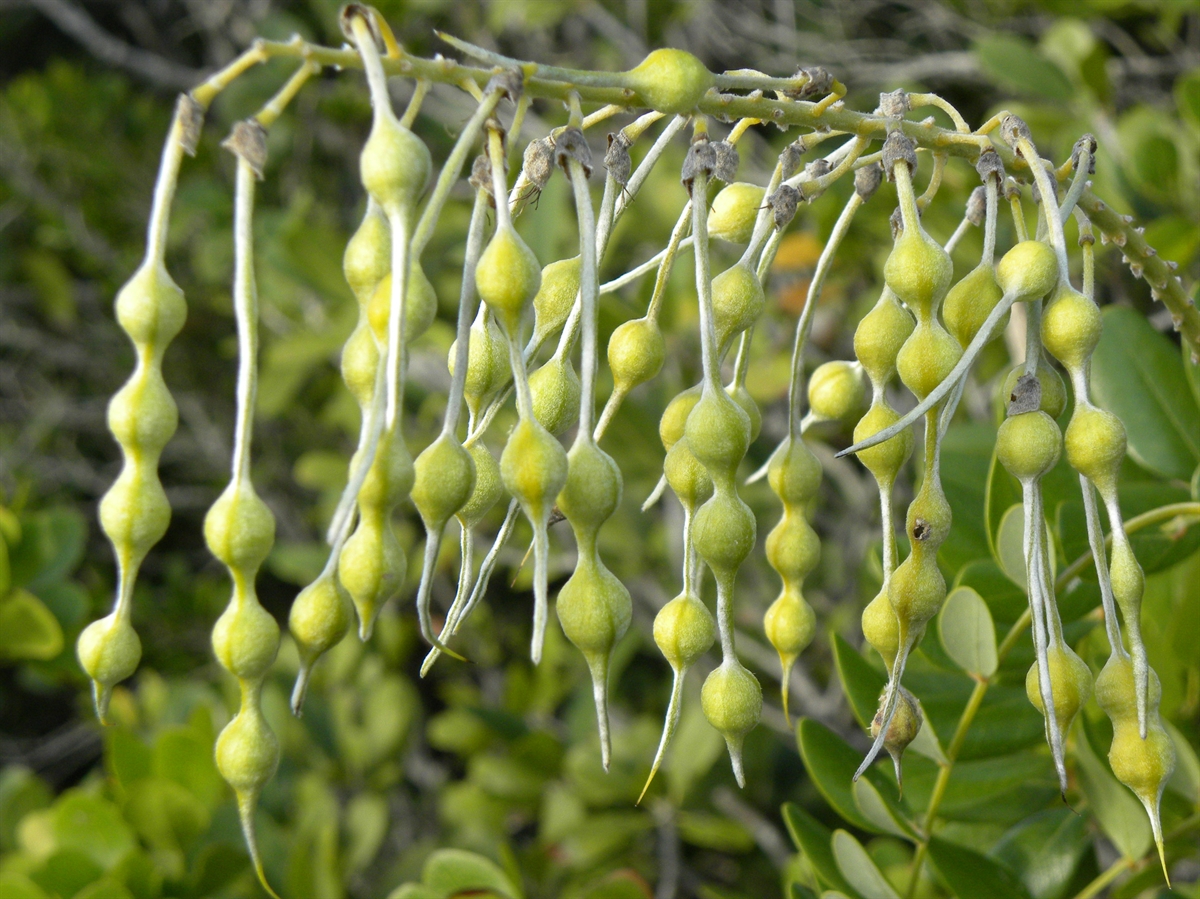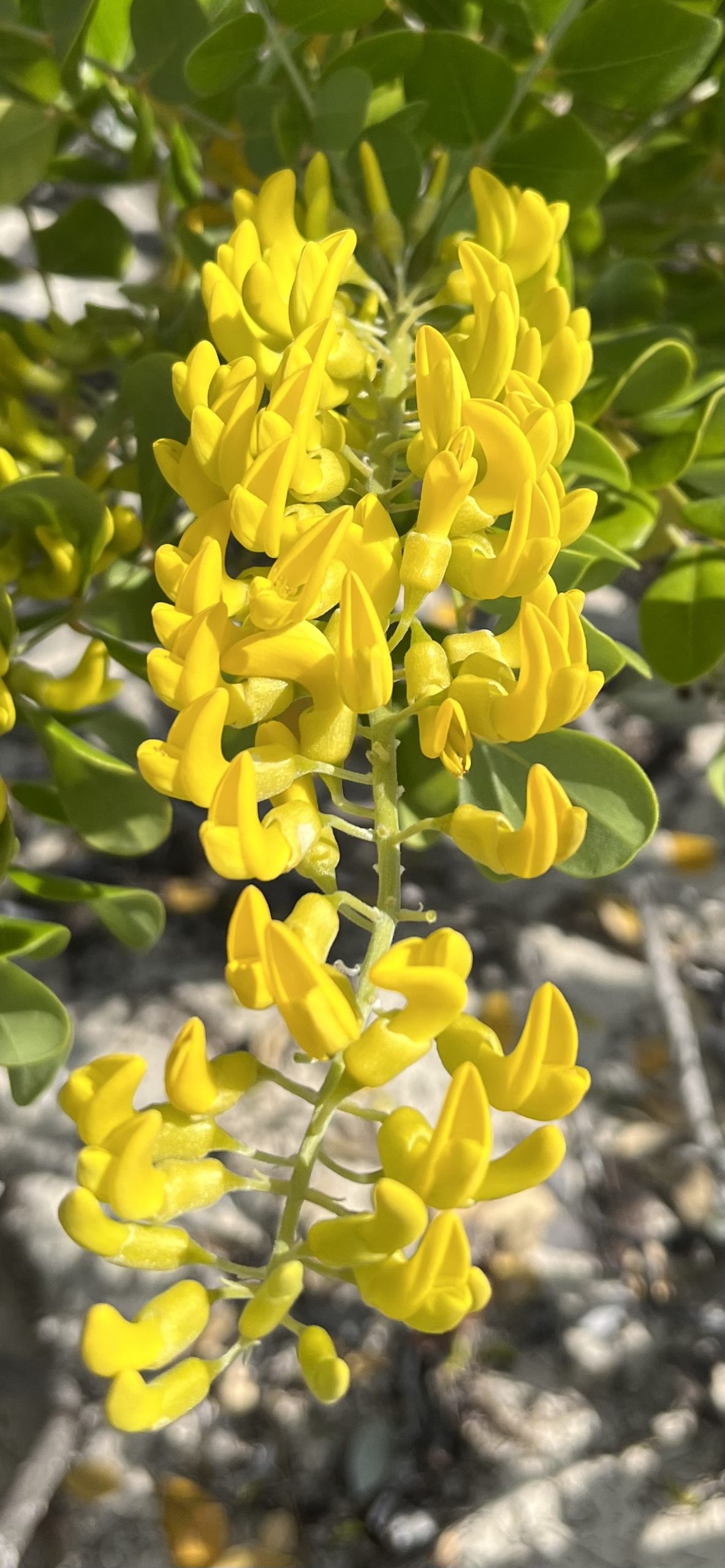Habit: Sophora tomentosa grows as a medium size shrub up to three meters in height with yellowish brown bark. The leaves are arranged alternately and are oddly, pinnately compound typically with 11- 19 leaflets. The leaflets are oval shaped with a rounded leaflet tip and are about five centimeters in length. The young stems and leaves are covered with a fine grayish pubescence.
The complete, perfect, zygomorphic flowers are arranged in a raceme that is up to 50 centimeters in length. The calyx has five fused sepals. The corolla has five unequal, unfused yellow petals. The upper two petals form a keel. There are nine or ten unfused stamens. The fruit is a legume that is constricted between the seeds and is up to 20 centimeters long. The fruit turns brown at maturity and will contain 2 -10 seeds.
Habitat: Sophora tomentosa is found in coastal habitats on an unconsolidated sand substrate. The habitats include Dry Broadleaf Evergreen Formation – Shrublands (coastal coppice), Dunes and on Rocky Shores
Distribution: Sophora tomentosa occurs on all islands within the Lucayan Archipelago, the southern United States, the Caribbean, Central and South America and various parts of the entire world along warm shorelines.
Medicinal/Cultural/Economic usage: Sophora tomentosa is not known to be used medicinally in the Lucayan Archipelago. In other areas of the world the seeds have crushed, put into a liquid solution and applied as an insecticide.
The flowers are known to attract hummingbirds and butterflies. Given the beautiful nature of the flowers and unique fruit shapes it has become part of the horticultural trade. Sophora tomentosa does well along coastlines in saline environments.




